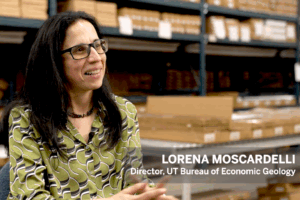For Hans Hofmann, the quest for the genetic building blocks of human behavior begins with a small fish.
Consider this scene: A subordinate male cichlid fish decides he’s ready to challenge a dominant male for territory and for the favor of fertile females. They fight. The subordinate male wins. And just like that, they switch.

The reversal doesn’t take place only at the level of behavior, of who gets to swim where and mate with whom. The pathways in the cichlids’ brains are rerouted. Hormones course through their blood streams in different proportions. The metamorphosis goes down to the genome, with genes that regulate growth and neural activity switching on and off with incredible speed.
The formerly subordinate male, whose patchy gray scales had blended into the background, becomes bright blue or yellow. He develops a dramatic black slash across his eye and a large red patch on his shoulder. His gonads increase in size by an order of magnitude and become capable of fertilizing eggs.
The formerly dominant male, now defeated, goes into decline. His gonads shrink. His color fades. His brain adjusts to life without territory or females. And he begins to bide his time, awaiting the right moment for him to reassert his dominance.
It’s a dramatic transformation, triggered by a simple interaction. But it’s not so different, it turns out, from the kinds of transformations that animals of all species (including the human one) are always undergoing in response to social interactions or cues from the environment.
“Genes don’t just generate behavior,” says Hofmann, an associate professor of integrative biology. “The behavior itself, and the environment in which it takes place, feed back into the genes, leading to changes which then lead to different behavioral outcomes in the future. That’s something that you and I experience all the time.”

Hofmann’s goal, in staging his behavioral experiments, is to answer questions about how cichlids establish social status, why they’re monogamous or polygamous, how they care for offspring, and how they react to predators. His deeper goal is to discover what genes shape, determine and constrain social behavior across species.
“I suspect that fish, or honeybees, or frogs are not as different from us as we’d like to think,” says Hofmann. “A human marriage, for instance, is not the same thing as a pair bond in fish. I’m not claiming that. What I’m predicting is that the genes associated with and underlying monogamy are to some extent the same in monogamous fish and in monogamous humans.”
The hunt for behavioral commonalities between animals and humans isn’t new. Humans have been noticing for millennia that we act like animals. Males fight with each other for the favor of females. Parents nurture and protect children. Tribes cooperate for the common good, and band together in the common defense.
When it comes to teasing out the behavioral similarities, however, what is new is the discovery that a far greater percentage of our genes than we’d imagined have been passed down to us, more or less intact, directly from the genome of the original progenitor of all vertebrate species on the planet. It’s been 450 million years since fish and mammals, for instance, began to diverge from that common ancestor, but the family genetic resemblance remains strong.
Another important discovery, and one that’s proven essential to Hofmann’s research, is that the expression of our genes can shift much more dramatically than had been thought. The genome is so dynamic, in fact, that it can turn on or off as many as 15 percent of its genes in less than a half hour, often in response to a simple stimulus from its environment.
This plasticity has made it possible for Hofmann to track with incredible precision how different behaviors are reflected down at the genetic level. Once the key genetic sequences are identified, they can be compared to similar sequences in other species. Then experiments can be run with those species to see if the genes play the same kind of roles in their behavior.

What Hofmann expects to see, as these comparisons grow richer over time, isn’t that biologists will discover universal genes for traits like dominance, compassion or loyalty. Behavior is far too complex for such a simple equation of genes and traits. What he expects to see is a deeper understanding of the basic processes that combine to form higher-level behavioral traits.
Instead of looking for the “monogamy gene,” for example, biologists might look to find the genes that affect how the male brain’s reward circuitry is connected to the long-term proximity of a female. Instead of looking for a “dominance gene,” scientists would look for genes that influence how a male responds to the approach of another male, and how that response fluctuates depending, for instance, on the relative fertility of nearby females, or on the availability of food or shelter in the environment.
The ultimate objective, or at least the most tantalizing one, is to learn enough about such genetic mechanisms to better understand human nature. Armed with a more scientific understanding, we might be able to outwit predispositions toward obesity, or addiction, or aggression. We might harness such an understanding to better cultivate virtues like emotional resilience, compassion, and even monogamy. Or we might just blow our minds in ways we can’t even imagine.
“People get so upset about stem cells, and issues like that,” says Hofmann. “What they should really think about is what neuroscientists are figuring out.”



